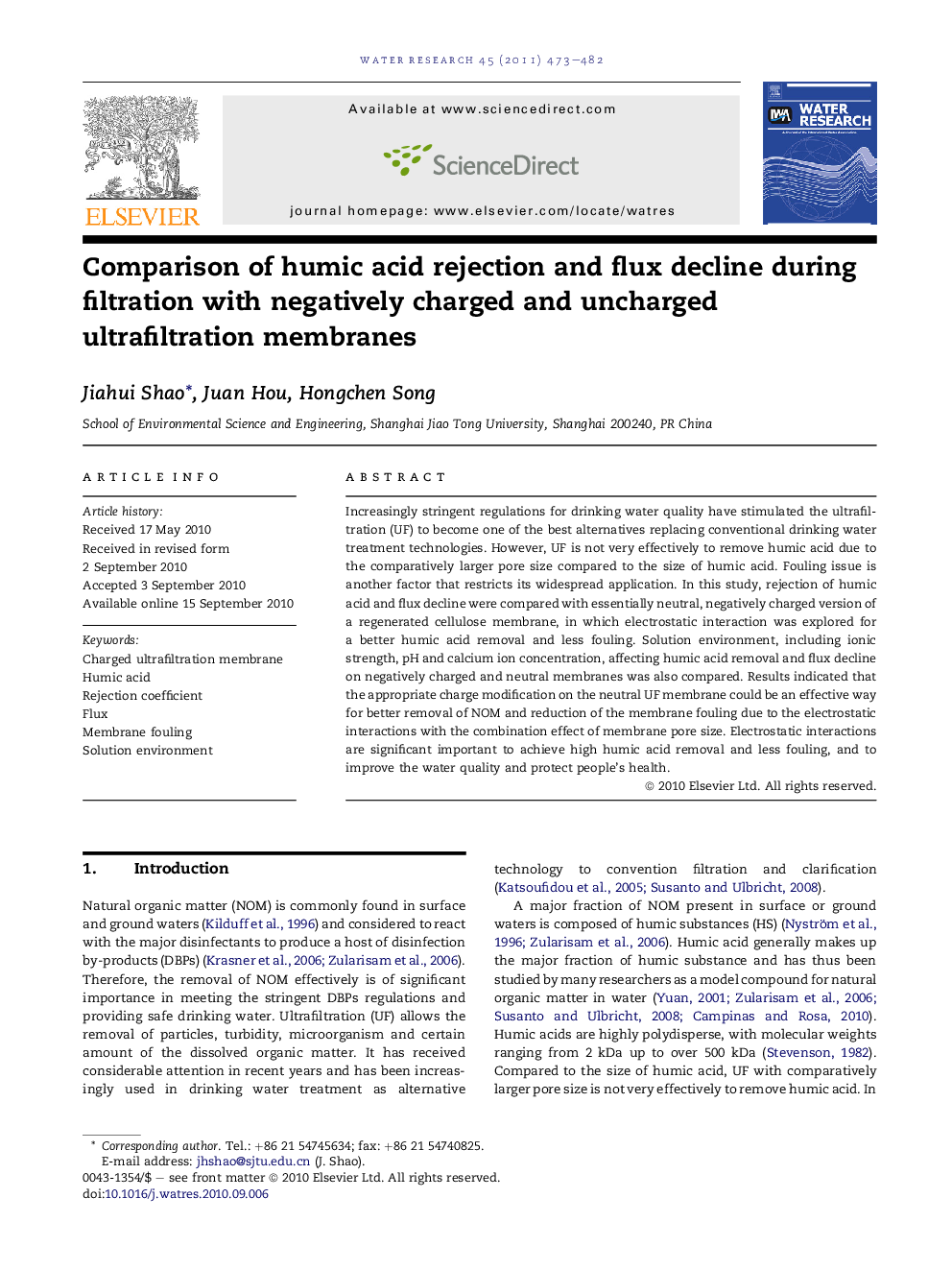| Article ID | Journal | Published Year | Pages | File Type |
|---|---|---|---|---|
| 6367924 | Water Research | 2011 | 10 Pages |
Abstract
Increasingly stringent regulations for drinking water quality have stimulated the ultrafiltration (UF) to become one of the best alternatives replacing conventional drinking water treatment technologies. However, UF is not very effectively to remove humic acid due to the comparatively larger pore size compared to the size of humic acid. Fouling issue is another factor that restricts its widespread application. In this study, rejection of humic acid and flux decline were compared with essentially neutral, negatively charged version of a regenerated cellulose membrane, in which electrostatic interaction was explored for a better humic acid removal and less fouling. Solution environment, including ionic strength, pH and calcium ion concentration, affecting humic acid removal and flux decline on negatively charged and neutral membranes was also compared. Results indicated that the appropriate charge modification on the neutral UF membrane could be an effective way for better removal of NOM and reduction of the membrane fouling due to the electrostatic interactions with the combination effect of membrane pore size. Electrostatic interactions are significant important to achieve high humic acid removal and less fouling, and to improve the water quality and protect people's health.
Related Topics
Physical Sciences and Engineering
Earth and Planetary Sciences
Earth-Surface Processes
Authors
Jiahui Shao, Juan Hou, Hongchen Song,
